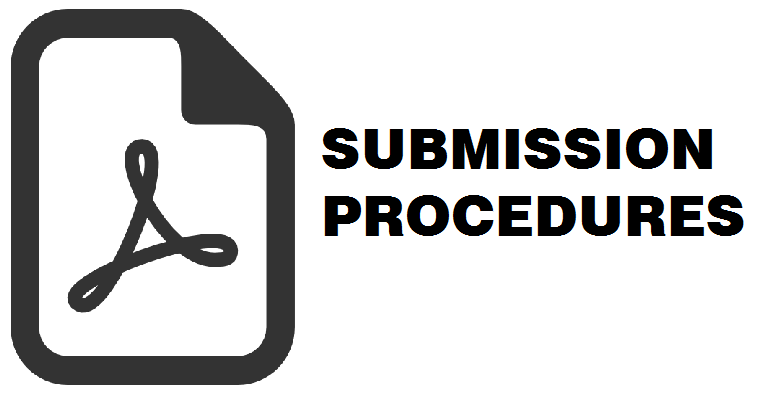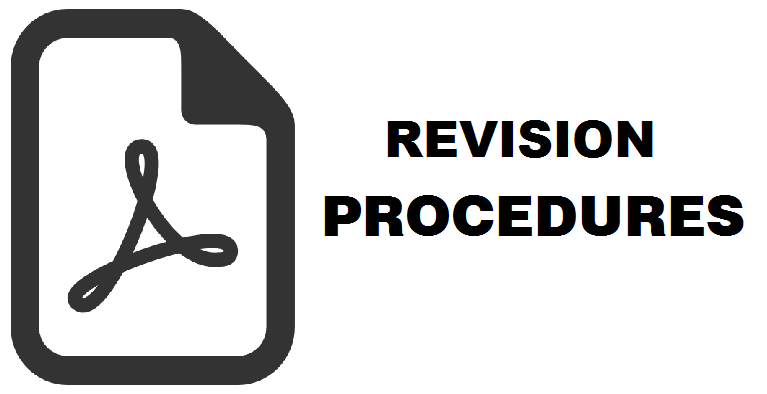Basement Characteristics of Jakarta Groundwater Basin Based on Satellite Gravimetry Data
Gumilar Utamas Nugraha(1*), Lina Handayani(2), Rachmat Fajar Lubis(3), Dadan Dani Wardhana(4), Karit Lumban Gaol(5)
(1) Research Center For Geotechnology, Indonesian Institute of Sciences , Indonesia.
(2) Research Center For Geotechnology, Indonesian Institute of Sciences , Indonesia.
(3) Research Center For Geotechnology, Indonesian Institute of Sciences , Indonesia.
(4) Research Center For Geotechnology, Indonesian Institute of Sciences , Indonesia.
(5) Research Center For Geotechnology, Indonesian Institute of Sciences , Indonesia.
(*) Corresponding Author
Abstract
Jakarta groundwater basin is one of the most developed basins in Indonesia as Jakarta city is located within the basin, with an elevation ranging from 0 to 1000 m above sea level. The study of the basement characteristics of groundwater basins still needs further study in the Jakarta Groundwater Basin. The objective of this study is to examine the basement characteristics of Jakarta Groundwater Basin by satellite gravimetry. Gravity forward models were constructed using Oasis Montaj and 2-D GM-SYS software for two north-south sections, A and B, and west-east section C-D. Regional anomalies in the study area with a value range of 36.7 to 53.2 mGal, while the residual anomaly values in the study area were in the range of -7.0 - 10.0 mGal. There are four rock formations based on forwarding modeling. Holocene Beach Ridge Deposit formation has a density of 2.0 gr/cc. The thickness of this formation is estimated to be around 10-20 meters. Late Pleistocene Alluvial fan has a density of about 2.2 gr/cc. The depth of this layer ranges from 10-50 meters. Early Pleistocene Formation, has a density of 2.35 gr/cc. The thickness of this formation is at a depth of 50-200 meters in the cross-section. The Tertiary Marine Sediment Formation is a basement of the Jakarta Groundwater Basin. This formation has a rock density of 2.45 gr/cc.
Keywords
Full Text:
PDFReferences
Assegaf, A. (1998). Hidrodinamika Air Tanah Alamiah Cekungan Jakarta. MSc Thesis, Geological Engineering Dept., Bandung Institute of Technology, Indonesia.
Bhattacharyya, B. K. (1978), Computer modeling in gravity and magnetic interpretation, Geophysics, 43, 912–929, doi:10.1190/1.1440873.
Carmichael, R. S., Henry, G. J., (1977). Gravity exploration for groundwater and bedrock topography in glaciated areas. Geophysics 42, 850–859.
Chandler, V. W., (1994). Gravity Investigation for Potential Groundwater Resources in Rock County, Minnesota. St. Paul.
Delinom, R. (2015). Ancaman Bawah Permukaan Jakarta: Tak Terlihat, Tak Terpikirkan, dan Tak Terduga. Jakarta:LIPI Press.
Djaja, R., Rais, J., Abidin, H. Z., And Wedyanto, K. (2004). Land Subsidence of Jakarta Metropolitan Area. 3rd FIG Regional Conference Jakarta, Indonesia, October 3-7, 2004.
Engelen, G. B., and Kloosterman, F. H. (1996). Hydrological System Analysis, Methods, and Application. Dorddrecht: Kluwer Academic Publisher.
Fachri, M., Djuhaeni, Hutasoit, L. M., Ramdhan, A. M. (2002). Stratifrafi dan Hidrostratigrafi Cekungan Airtanah Jakarta. Bulletin Geologi (34) 3:169-189.
Han, S. S., & Basuki, A. (2001). The Spatial Pattern of Land Values in Jakarta. Volume: 38 issue: 10, page(s): 1841-1857 Issue published: September 1, 2001.
Kagabu, M., Delinom, R. M., Lubis, R. F., Shimada, J., and Taniguchi, M. (2010.) Groundwater Characteristics In Jakarta Area, Indonesia. Riset Geologi dan Pertambangan Vol. 20 No. 2 (2010), 69 -79.
Kirsch, R., (2009). Groundwater Geophysics, 2nd ed. Springer, Berlin Heidelberg. DOI:10.1007/978-3-540-88405-7.
Kunnummal P, Anand S P, Haritha C and Rama Rao P (2017) Moho depth variations over the Maldive Ridge and adjoining Arabian & Central Indian basin, Western Indian Ocean, from three-dimensional Inversion of Gravity anomalies; J. Asian Earth. Sci. 156 .1016/j.jseaes.2017.12.012.
Handayani, L., and Wardhana, D. D. (2017). Gravity Exploration For Groundwater And Bedrock Topography In Serang, Banten. Ris.Geo.Tam Vol. 27, No.2, December 2017 (157-167) DOI: 10.14203/risetgeotam2017.v27.295.
Lubis, R. F. (2018). Urban hydrogeology in Indonesia: A highlight from Jakarta. IOP Conf. Series: Earth and Environmental Science 118 (2018) 012022 DOI:10.1088/1755-1315/118/1/012022.
Lubis, R. F., Sudaryanto, Yamano, M., Delinom, R., Miyakoshi, A., Sakura, Y., Shusaku, G., Taniguchi, M. (2009). Urban groundwater loading in Indonesian mega-cities. Trends and Sustainability of Groundwater in Highly Stressed Aquifers (Proc. of Symposium JS.2 at the Joint IAHS & IAH Convention, Hyderabad, India, September 2009). IAHS Publ. 329, 2009.
Martodjojo, S. (1984). Evolusi Cekungan Bogor, Jawa Barat. Ph.D. Dissertation, Bandung Institute of Technology.
Murty, B. V. S., Raghavan, V. K., (2002). The gravity method in groundwater exploration in crystalline rocks : a study in the peninsular granitic region of Hyderabad, India. Hydrogeol. J. 10, 307–321. DOI:10.1007/s10040-001-0184-2.
Overmeeren, R. A. Van, (1981). A combination of electrical resistivity, seismic refraction, and gravity measurements for groundwater exploration in Sudan. Geophysics 46, 1304–1313.
Panjaitan, S. (2009). Aplikasi Metode Gaya Berat Untuk Identifikasi Potensi Hidrokarbon di Dalam Cekungan Jakarta dan sekitarnya. JSDG Vol 19 No.6 Desember 2009.
Rama Rao, P., K. V. Swamy, and I. V. Radhakrishna Murthy (1999), Inversion of gravity anomalies of three‐dimensional density interfaces, Comput.Geosci., 25, 887–896, DOI:10.1016/S0098-3004(99)00051-5.
Reeves, C. (2005). Aeromagnetic Surveys: Principles, Practice & Interpretation. Canada. Geosoft Inc.
Rimbaman, R. and Suparan, P. (1999).Geomorphology, in: Coastplan Jakarta Bay Project, Coastal Environmental Geology of the Jakarta Reclamation Project and Adjacent Areas, CCOP COAST PLAN Case Study Report No. 2., Jakarta/Bangkok, 21–25, .
Rismianto, D. & Mak, W. (1993). Environmental Aspects of Groundwater Extraction in DKI Jakarta: Changing Views. Proceeding of the 22nd annual convention of the Indonesian Association of Geologist, Bandung, 327-345.
Saito, M., Onodera, S., Umezawa, Y., Hosono, T., Shimizu, Y., Delinom, R.M., Lubis R. F., and Taniguchi, M. (2011). Transport And Transformation Of Chemical Components In The Groundwater Flow System Of Jakarta Metropolitan Area. Ris.Geo.Tam Vol. 21, No.2, Juni 2011 (1-139) DOI: /10.14203/risetgeotam2011.v21.41.
Sandwell, D. T., Müller, R. D., Smith, W. H. F., Garcia, E. and Francis, R. 2014. New global marine gravity model from Cryo-Sat-2 and Jason-1 reveals buried tectonic structure. Science, Vol. 346, 6205, pp. 65-67, DOI: 10.1126/science.1258213.
Santos, F. A. M., Sultan, S. A., Sorady, A. L. El, (2006). Joint inversion of gravity and geoelectrical data for groundwater and structural investigation : application to the northwestern part of Sinai, Egypt. Geophys. J. Int. 165, 705–718. DOI:10. 1111/j.1365-246X. 2006. 02923. x.
Spector, A. and Grant, F.S., (1970). Statistical models for interpreting aeromagnetic data. Geophysics, Vol.35, pp. 293-302.
Tambunan, Rudy P. (2007). Dampak Perkembangan Fisik Kota terhadap Pola Tata Air Ekosistem Dataran Rendah Jakarta. Disertasi. Jenjang Doktor Program Studi Ilmu Lngkungan. Program Pascasarjana. Universitas Indonesia.
Whitehead, N., Musselman, C. (2006). Montaj Grav/Mag Interpretation User Guide and Tutorial. Canada. Geosoft Inc.
Article Metrics
Refbacks
- Pembaruan
- Komunitas
- Komunitas
- Aplikasi
- Update
- Statistik
- Berlangganan
- Diskusi
- Tautan
- Event
- Pendaftaran
Copyright (c) 2020 Gumilar Utamas Nugraha

This work is licensed under a Creative Commons Attribution-NonCommercial 4.0 International License.
Accredited Journal, Based on Decree of the Minister of Research, Technology and Higher Education, Republic of Indonesia Number 225/E/KPT/2022, Vol 54 No 1 the Year 2022 - Vol 58 No 2 the Year 2026 (accreditation certificate download)
ISSN 2354-9114 (online), ISSN 0024-9521 (print)










